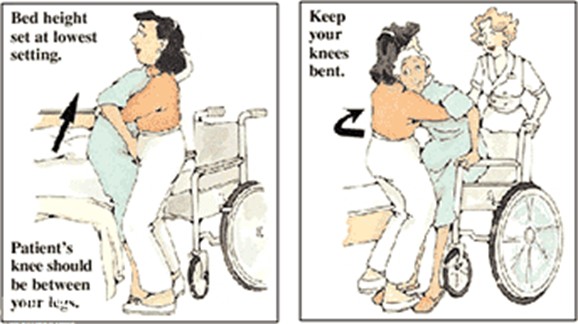Which of the following statements creates a barrier to communication?
Do you know how to change your dressing?
What did your healthcare provider tell you about your need for this hospitalization?
You mentioned your dad earlier. Did he develop complications related to high blood pressure?
How do you manage your pain at home?
The Correct Answer is A
“Do you know how to change your dressing?” This statement can create a barrier to communication because it may make the patient feel judged or defensive if they do not know how to change their dressing.
It is better to phrase the question in a more open-ended and non-judgmental way, such as “Can you tell me about your experience with changing your dressing?”
Choice B is not an answer because it encourages the patient to share information about their hospitalization and promotes open communication.
Choice C is not an answer because it shows that the speaker is actively listening and engaging with the patient’s previous statements.
Choice D is not an answer because it encourages the patient to share information about their pain management and promotes open communication.
Nursing Test Bank
Naxlex Comprehensive Predictor Exams
Related Questions
Correct Answer is D
Explanation
Scheduling massages as well as taking prescribed medication for pain control is an example of complementary therapy.
Complementary therapy refers to the use of non-mainstream practices in conjunction with conventional medical treatment.
In this case, the client is using massage therapy, a complementary approach, along with their prescribed medication to manage their pain.
Choice A is not an appropriate response because pain therapy is a broad term that can refer to any approach used to manage pain.
Choice B is not an appropriate response because nociceptive pain control refers to the management of pain caused by tissue damage or inflammation.
Choice C is not an appropriate response because non-therapeutic communication refers to communication that does not promote healing or well-being.
Correct Answer is C
Explanation
Locking the wheels of the wheelchair is a priority action of the nurse to ensure client safety during a transfer from the bed to a wheelchair.
This prevents the wheelchair from moving or rolling away during the transfer, which could result in injury to the client.

Choice A is not an appropriate response because encouraging the client to push up from the wheelchair may not be safe or feasible for all clients.
Choice B is not an appropriate response because ensuring the client is bathed before getting into the wheelchair is not directly related to client safety during the transfer.
Choice D is not an appropriate response because placing the bed in the trendelenburg position could make it more difficult for the client to transfer
Whether you are a student looking to ace your exams or a practicing nurse seeking to enhance your expertise , our nursing education contents will empower you with the confidence and competence to make a difference in the lives of patients and become a respected leader in the healthcare field.
Visit Naxlex, invest in your future and unlock endless possibilities with our unparalleled nursing education contents today
Report Wrong Answer on the Current Question
Do you disagree with the answer? If yes, what is your expected answer? Explain.
Kindly be descriptive with the issue you are facing.
